Mr. Redheaded Herbalist and I had the pleasure of hearing Dr. Natasha Campbell-McBride speak in person about her GAPS protocol at the 2022 Wise Traditions Conference that was held a couple months back in Knoxville.
Hippocrates famously stated that “All Disease Begins in The Gut.” Dr. Campbell-McBride would agree! As turns out, the health of your gut determines just about everything else.
GAPS stands for “Gut & Psychology Syndrome” or “Gut & Physiology Syndrome.” The basic premise behind the GAPS protocol is that gut health is closely linked to overall health and that improving gut health can help improve all sorts of conditions ranging from allergies to autism, dyslexia to autoimmune disorders (and ALL chronic diseases have an autoimmune component).
The gut is an often overlooked aspect of health, but it just might be the *most* important thing to look at! The gut is sometimes referred to as the “second brain” for a reason. It plays a major role in regulating the body’s immune and nervous systems. Our gut flora is actually our body’s largest endocrine organ. It plays a role in the production and recycling of vitamins, hormones and neurotransmitters, and even regulates our appetite and food consumption.
According to Dr. Campbell-McBride, all microbes can cause disease if out of balance. And how do you influence the composition of a microbial community?
FOOD!
By this measure, food is the single most important influence on human health.
Unfortunately, our collective gut flora is getting worse by the generation. Thanks to decreasing food quality, processed foods and exposure to pervasive toxins like glyphosate and plastics, parents pass an increasingly toxic microbial load on to their babies.
But how does one repair their gut flora?
Enter: the GAPS protocol
The GAPS nutritional protocol is a modified Specific Carbohydrates Diet (SCD) designed to restore a healthy gut microbiome by removing digestive stressors and replacing them with gentle nourishing foods like homemade broth.
The body wants to be healthy and will return to homeostasis if it’s allowed to do so. But in order for that to happen, the stressors causing the damage in the first place must be removed. The GAPS protocol effectively removes those stressors allowing the body to seal up a leaky gut, restore digestive function and rebuild a healthy microbiome.
If you allow the body to heal, it will. ♥
Stages of the GAPS protocol
GAPS is divided into three main parts: a 6-Stage Introduction Diet, the Full GAPS Diet and post-GAPS reintroduction/maintenance.
The Intro Diet is essentially an elimination diet designed to reduce sources of inflammation allowing the gut space to heal. Dr. Campbell-McBride considers animal foods to be the gut’s most important “building” foods. Humans can live on animal foods, but not on plants alone.
Plants are a wonderful “power cleansing” aspect of our diets, but they are indigestible to the human stomach without the help of the only things on the planet that can fully digest plant matter: microbes. Without sufficient microbes, we simply cannot digest plants. For people with compromised gut flora, this becomes a huge stressor and a potential source of disease.
GAPS Intro includes a lot of simple, nourishing and easy-to-digest homemade soups and stews made with meat stocks, boiled meats, very-well-cooked non-starchy vegetables and increasing amounts of fermented foods (you begin with just a couple of teaspoons of sauerkraut brine).
As you progress to each new stage, new foods and cooking styles are added back one at a time as the gut heals. The specific foods and pacing depends on individual tolerances, but it takes most people 3 to 6 weeks to move through the intro stages (roughly 3-5 days per stage).
The “Full GAPS” stage includes a much wider selection of foods. You still focus on the simply prepared, the nutrient dense and the easily digestible, while continuing to avoid refined sugars, grains and processed foods.
Calories are never the focus of this diet. Eat until you’re satisfied and eat again when you’re hungry.
Maintenance is the final stage of the GAPS diet, and involves the reintroduction of a wider range of foods, including grains and the starchier legumes. As the name implies, Maintenance is meant to help folks maintain the improvements they have made during the previous stages of GAPS, and to support long-term health and wellness.
The emphasis is on maintaining a healthy gut microbiome and good digestion, and avoiding foods that may reintroduce digestive problems or other health issues.
Moving from stage to stage
The general guideline is to remain on each stage of the Introduction Diet for 3-5 days. If you don’t have significant gut problems, you might be able to move through each stage in as little as two days, while others with more challenging digestive disorders may need to stay on the Intro Diet longer.
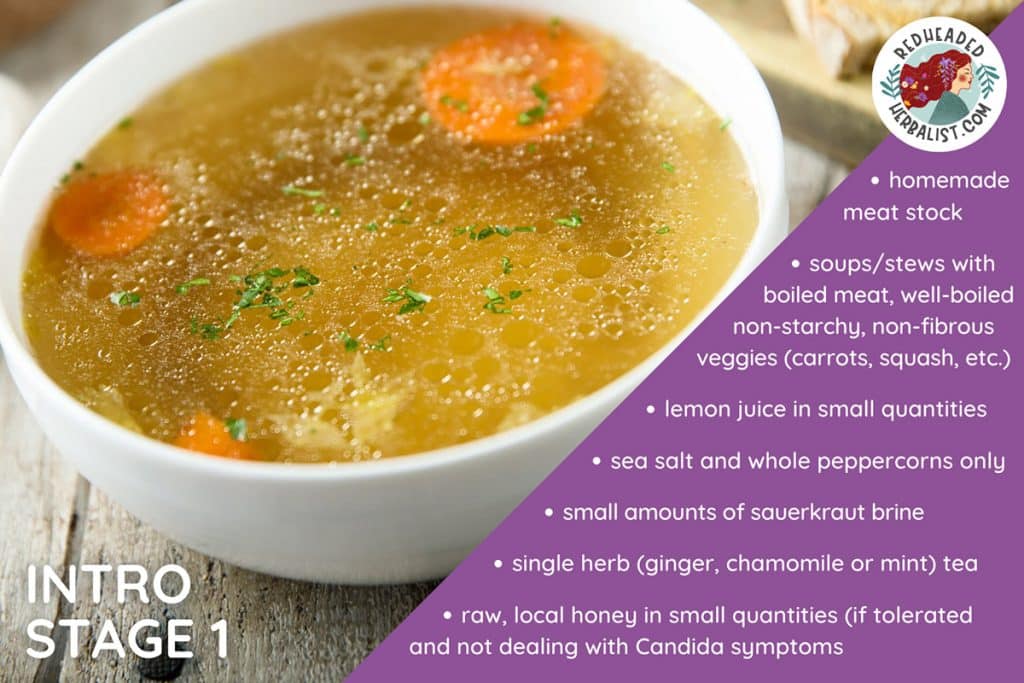
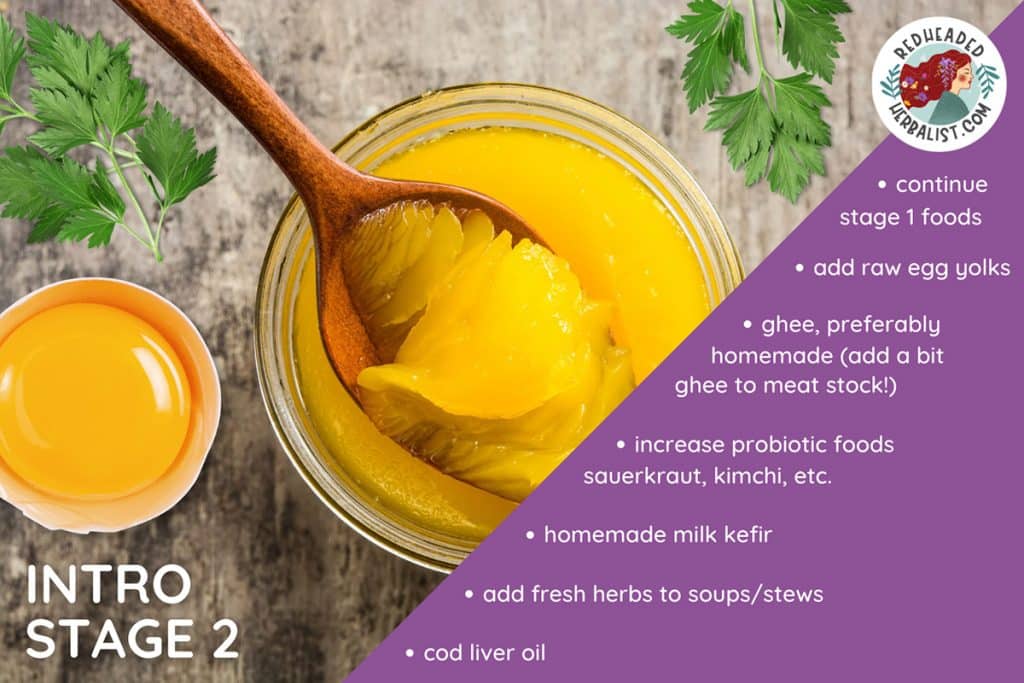
Progression through each stage of the Intro Diet depends on individual tolerance. If you move to the next stage and begin to feel bad after reintroducing a food, go back to the previous stage for a bit longer and try again.
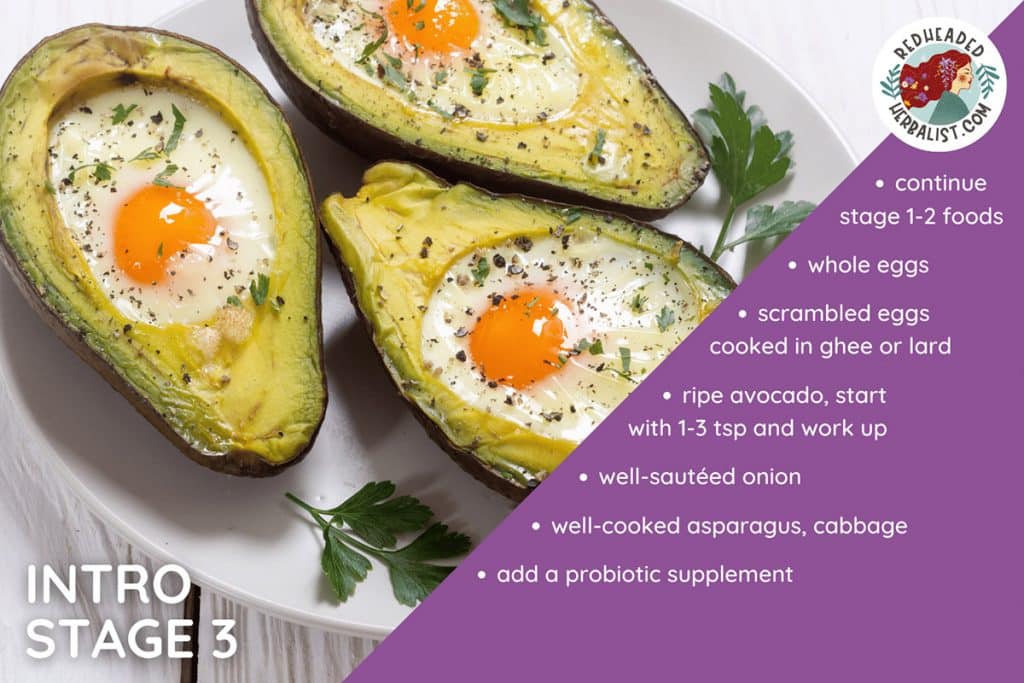
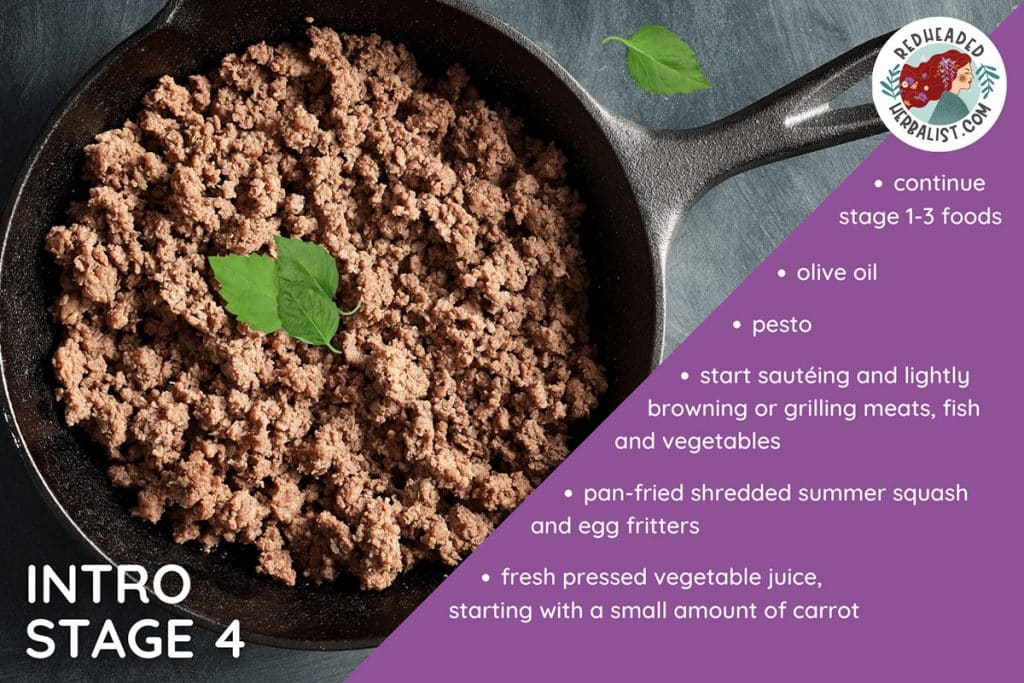
Signs that you may not be ready to progress to the next stage include symptoms such as abdominal pain/bloating, extreme flatulence, rashes, diarrhea or constipation. For individuals with behavioral issues, you might see a return of behaviors such as outbursts of temper that had previously been managed.
There’s no official timeframe for these stages. You really do have to intuit your way through them based on the symptoms and health goals of the individual.


Once the intro stages are completed and you’re eating most of the foods comfortably, you are ready to move on to Full GAPS.
Once again, the specific recommendations for Full GAPS varies depending on depending on the individual’s needs and health goals. Full GAPS may be followed for several months to two years (or even longer) for maximum restoration of gut health.
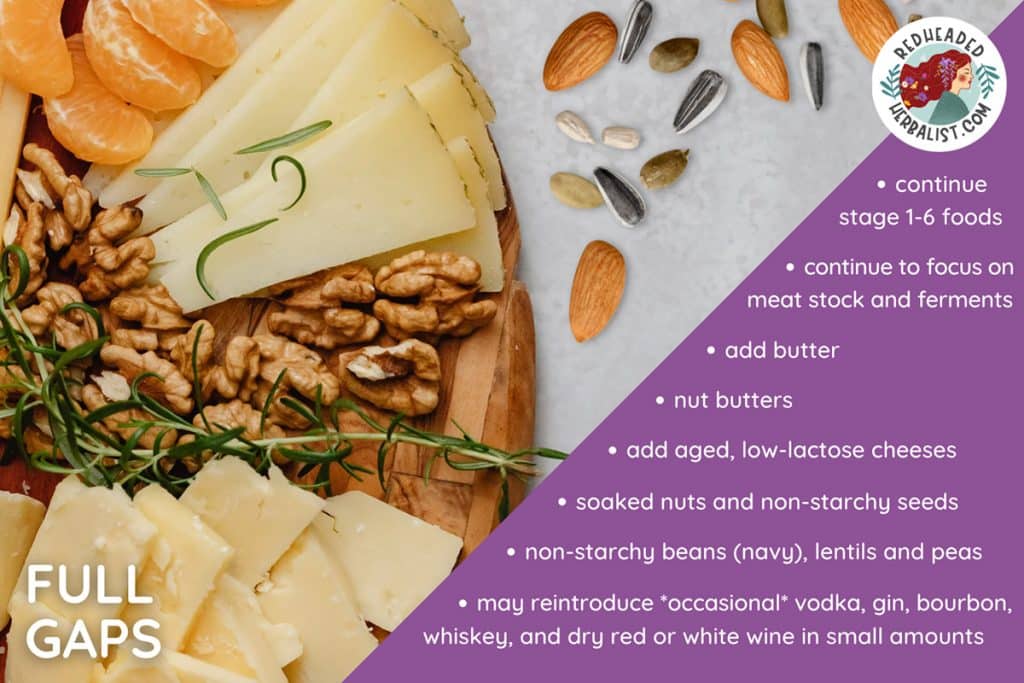
How do you know when it's time to stop GAPS?
Naturally, how long you stay on Full GAPS before moving to Maintenance will vary considerably from person to person. If your symptoms have disappeared completely (or almost completely) it may be time to begin incrementally reintroducing starches. Perhaps a small portion of sweet potato cooked in animal fat or a bit of homemade tapioca to start. Too much too quickly will cause gas and bloating, so let your body become reacquainted with starchy whole foods.
After GAPS: takeaways
While it’s not necessary (nor likely advisable) to stay on the GAPS diet forever, to me, one of the most important aspects of GAPS is to come away with lifelong habits that you take with you after you’ve completed the protocol. Here are a few of the practices I plan to keep up post-GAPS:
- We will continue to prioritize animal fats like tallow and ghee for cooking.
- I will try to serve a bit of fermented food, be it water kefir, homemade yogurt, crème fraîche, fermented beets, sauerkraut or a bit of raw cheese. with every meal.
- I plan to continue the practice of mixing a raw egg yolk or two into any dishes that would benefit from a little extra creaminess. Stir fries, one-pot meals and dishes with sauces are no brainers. Drop a yolk into the pan or pot just off the heat, so that it’s still warm but not boiling (you don’t want to cook the yolk) and whisk or stir quickly to coat the food. Delicious!
- I plan to continue serving broth with most meals. We really enjoy the convenience of having a “perpetual” broth going in the slow cooker, so it’s easily accessible to drink as a healthy and satisfying snack substitute during the day.
- When it comes time to add back bread, tortillas and grains, I will prioritize sourdough and nixtamalized corn and make sure we’re soaking and/or sprouting most everything else. I’ll keep sprouted spelt around for times when “fast” food is needed.
- I’d also like to replace most sweets in our house with dates, figs and honey (and treats made with them). It’s amazing how decadent and satisfying a date can be! Nature’s caramel. It remains to be seen how well this will go over, lol.
Next week, I’ll share what we did to prepare for starting GAPS.
More on GAPS, GAPS-friendly recipes & preparing for GAPS:
Tips & Tricks For Doing GAPS With Kids
Wise Traditions & Homemade Sauerkraut
Quick Fermented Garlicky Beets
Water Kefir SOS: Troubleshooting Your Brew
The Health Benefits Of Soaking Nuts & Seeds
Simple Larabar Inspired Date Bars Using Soaked Nuts


